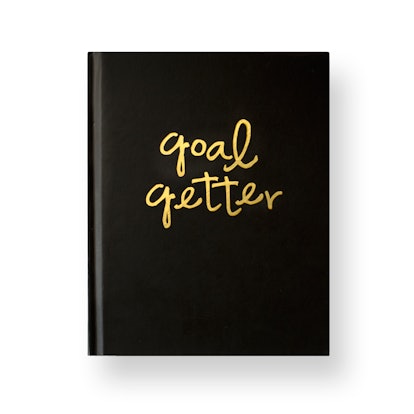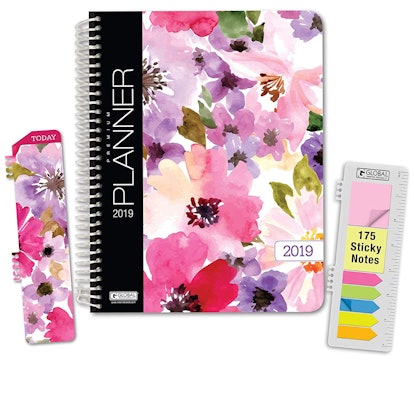It's pretty clear that images are a big factor for improving content marketing pieces.
While "the more the better" isn't factually accurate as adding 100 images for the sake of images isn't smart, more than zero is a good start.
Images can help readers break down sections of expansive content and pull the key information from it.
How do you know what images are memorable and which to include in your content to do that?
I'll show you.
How Many Images Should Content Have?
Before we jump into picking memorable images for your content, it's important to know how many images your content pieces need.
There is no set, magical number that will launch your conversions through the roof.
It's not like adding 15 images instead of 11 is going to make a world of difference in your content.
In fact, adding too many images for the sole purpose of imagery can backfire on you.
Image totals depend completely on the:
Type of content you are writing. Audience. Topic. Are you writing content for a beginner audience? You probably need more images to explain steps and show how specific tools work.
Are you writing content for an advanced, senior audience? You can still showcase tools, but you likely don't need as many step-by-step screenshots. These can become tedious for someone more advanced in a given field.
Beyond advancement, the actual roles that your target audience plays can impact image needs too.
If you are writing to CEOs, showcasing a tool walkthrough doesn't really make sense. Why? CEOs are rarely in the day to day grunt-work using marketing tools. They are delegating that task to someone else.
Using images in content is more complex than meets the eye.
Before starting to add images to your next post, first consider your target audience in detail to understand what they expect, want, and what can be directly applied in their day-to-day as efficiently as possible.
Now, let's go over some surefire ways to pick memorable images for your next post.
1. Avoid Stock Photos in Body Content
Stock photos can feel magical at first:
Precreated, crystal clear, high-quality images that fit almost any topic and search query.
But when it comes to aiding your body content in a post, stock photos suck big time.
Stock photos can be fantastic for featured images, but they add zero value when randomly throw into the body of your content.
Why? They are too generic to fit your subject and simple screenshots could produce more effective visual stimulus.
Stock photos don't have the data-backing, either. Studies have repeatedly shown them to produce even negative effects.
Avoid using stock photos in the body content and try using more tutorials, walkthroughs, and screenshots.
2. Showcase More Screenshots, Tutorials & Walkthroughs
Memorable content contains tidbits that are either actionable in nature or thought-provoking.
And both of these require some form of guided walkthrough, tutorial, or screenshots to showcase examples.
Tutorials are only effective if you show, not tell.
Through-provoking posts demand images to show what you are talking about and bring it to life.
The easiest way to add images to your posts is by doing any of the above.
Showcase step-by-step how you used a specific marketing tool to get the job done. Show what settings you tweaked:


Show the exact piece of information you want readers to focus on when they look at your image:


Most images can be complex and detailed with dozens of different factors at play.
Highlighting and calling-out specific sections of the image saves the reader time and frustration by literally signaling the important aspects for them.
Using a tool like Skitch or Evernote, you can screenshot and highlight images to do just that:


If you are just using basic screenshots without these f unctions, readers could get frustrated and confused, leaving them with less value than you want to give and that your post surely offers.
No matter what type of post you are writing, try including examples via screenshots and walkthroughs. Provide call-outs to focus attention on the important aspects of the image and your images will provide tons more value to readers.
3. Reserve GIFs for Informal Posts or Niche Audiences
GIFs are funny, lighthearted, and can spice up otherwise boring content.
Infamous writers like Lianna Patch use them all the time in their content:


But GIFs don't work for every writer, every audience, and every type of content published.
Lianna has a specific style that's informative yet witty, hilarious, and informal.
It works for her audience and her ability to craft funny yet accurate content.
But not all audiences are going to be receptive to GIFs. And not all posts need them.
When it comes to using GIFs, reserve them for more informal opinion pieces or niche audiences.
If you are writing for advanced audiences that focus on technical aspects of a job, gifs should likely be avoided. If you are writing a fun opinion piece that is still informational, gifs can help you extend personality and improve reader enjoyment.
4. Develop Custom Visuals to Synthesize Information
Struggling to find memorable images for a blog post that aren't:
Generic? Boring? Overused? Cited from external sources where you might not have legal rights to use it from? Then custom visuals are your answer.
Developing custom visuals for your content can help you add credibility, synthesize complex concepts, data, numbers, and even drive more backlinks to your site.
As an example, on my company's site, our blog posts are always complete with custom visuals to help break down complex information, like this writing services results comparison:


This 13,000+ word case study would be nearly impossible to read, digest, or understand without these custom visuals.
Custom visuals like these also provide the benefit of getting easier backlinks to your site.
Look at almost any content marketing piece online and there will be sourced and cited images from top pages.
And almost always these images are branded, unique, custom developed images.
Even if you aren't writing about unique data that can be developed into charts and tables, you can still produce nice custom images.
For example, I had these images developed for another piece of content on my company website:


Instead of breaking down numbers, it breaks down a concept on types of B2B companies using real-world analogies and an easy to understand visual aid.
These images are cheap and easy to develop on your own or with freelancers and can add tons of value to plain text content.
Need more memorable images for your content pieces? Develop your own custom images!
You can do this on your own if you are familiar with graphic design or use tools like Canva, etc.
Or you can hire freelancers to get the work done on sites like Design Crowd, UpWork, and more.
Conclusion
Content without images isn't inherently bad. But content with images is almost always more enjoyable and even improves social sharing and recall.
So it's essentially a no-brainer. If you can fit images in naturally, that is.
Avoid stock photos within the body of your content. They are great for featured images, but images in your text for the sake of images can hinder performance.
Do you love GIFs? So do I, but they aren't appropriate for every audience and post. If you are writing a long-form, formal guide, they probably should be left out.
One surefire way to add memorable images is via tutorials and walkthroughs. These are easy ways to include helpful images that break up your content.
If you feel like going all out, spring for custom visuals that can help your audience synthesize complex topics or data.
More Resources:
Image Credits
Featured Image: Pixabay.comScreenshots taken by author, February 2019
Subscribe to SEJ
Get our daily newsletter from SEJ's Founder Loren Baker about the latest news in the industry!























